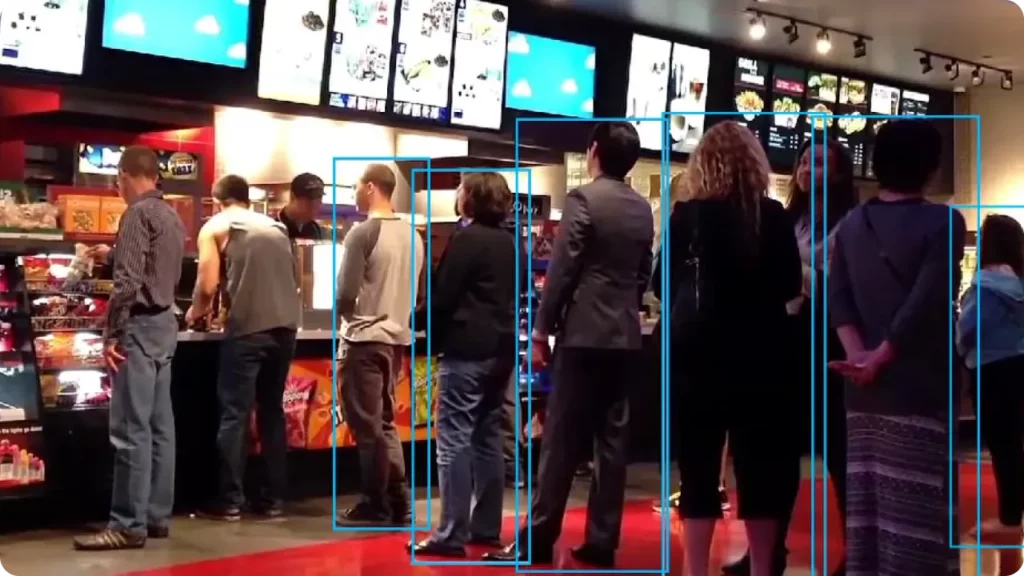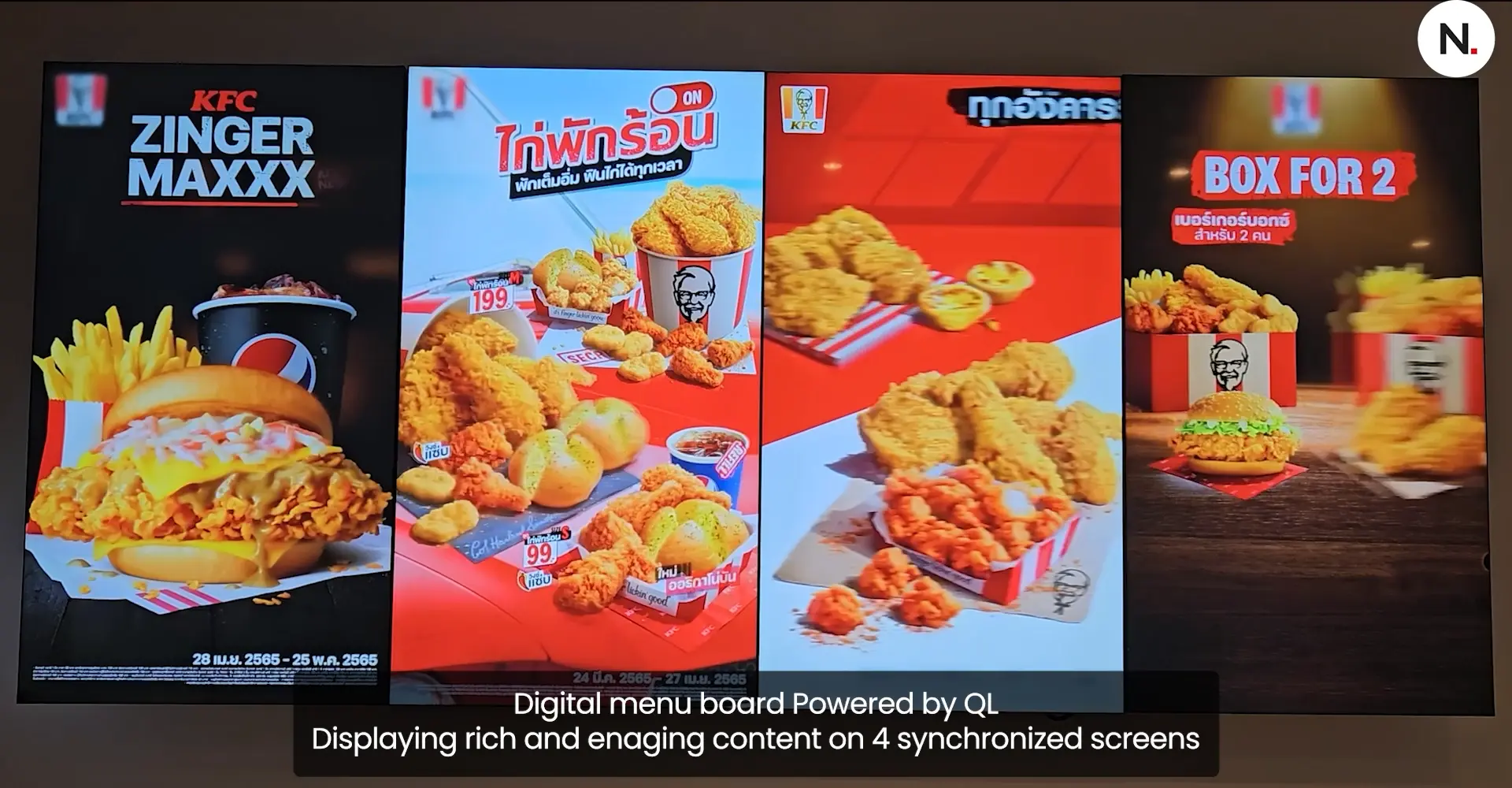A Comprehensive Guide For
Your Indoor Digital Menu Boards
The Increasing Popularity of Indoor Digital Menu Boards
Understanding the Technology Behind Indoor Digital Menu Boards
Transitioning from Printed Menus to Digital
Indoor digital menu boards mark a significant advancement in visual communication for the quick-service restaurant industry. Moving away from traditional static menus, which display unchanging content on printed boards, digital menu boards utilize digital technology to create dynamic and interactive displays within restaurants, cafes, and fast-food chains.
What distinguishes digital menu boards is their capability to display updated content in real-time. This allows businesses to seamlessly change menu items, adjust prices, update promotions, and switch imagery with just a few clicks. This flexibility not only enhances customer engagement but also streamlines the operational process, making it easier to respond to customer demands and market trends instantly.
Digital Menu Board Components
Hardware
Digital menu boards are composed of several key hardware elements. The primary component is the high-definition displays or screens that present menu items and promotional materials. To support the physical setup, peripherals such as mounting brackets, cables, and power sources are also vital.
These displays are typically driven by media player devices, which can be external or embedded directly within the screens as System-on-Chip (SoC) solutions. SoC screens with integrated players offer a cost-effective setup. However, they tend to be less powerful, which might restrict the features available and affect the smoothness of content rendering on the screen. Additionally, while all-in-one solutions can simplify installations, they may be more costly to maintain. For instance, if a malfunction occurs, the entire screen often needs to be disassembled for repairs.
Software Components of Digital Menu Boards
On the software front, digital menu board systems are driven by two main modules:
- Content Management System (CMS): The CMS is crucial for organizing, scheduling, and updating the content displayed on digital menu boards. These robust platforms feature user-friendly interfaces that allow users to easily create and manage menus, upload multimedia content, and schedule promotions based on different times of the day.
- Player App: The player app running on the player device, empowering the visuals, ensuring smooth playback of multimedia content

The Advantages of Indoor Digital Menu Boards
Digital menu boards offer various of benefits that improve the way restaurants communicate with their customers and enhance the overall menu selection. One of the most significant advantages is the ability to deliver dynamic content updates in real-time, ensuring that menus always reflect the latest offerings, prices, and promotions. This agility eliminates the need for costly and time-consuming manual updates but also enables businesses to respond swiftly to changes in inventory, seasonal specials, or market trends.
Furthermore, digital menu boards captivate patrons with their enhanced visual appeal, leveraging high-definition displays and vibrant graphics to showcase menu items in stunning detail. The dynamic nature of digital content allows for creative presentations, incorporating eye-catching animations, videos, and imagery to entice customers and stimulate their appetites.
Insights into Deploying Digital Menu Boards
The deployment of digital menu boards requires careful planning to achieve seamless integration into indoor settings. Several key considerations guide this process:
- Hardware Placement: are critical, with factors such as visibility, accessibility, and aesthetic appeal guiding decisions.
- Connectivity Requirements: must also be addressed, including Wi-Fi or Ethernet connectivity for content updates and real-time synchronization with point-of-sale systems.
- Power Sources: to sustain uninterrupted operation is essential, whether through direct electrical outlets or alternative power options such as a UPS.

Best Practices
Screen Visibility
The screens used are standard indoor displays, designed for continuous use 24/7, every day of the year. They are also certified by the screen manufacturers to function in environments with exposure to heat and grease, commonly found in food-related settings.
These screens should have a brightness level of at least 500 nits and accurately reproduce colors for the menu items displayed. When multiple screens are placed side by side, they must have consistent color settings to ensure uniformity. Since customers are closer to the screens indoors, they are usually limited to a size of around 55 inches.
Ideally, the screens should have minimal bezels to create a seamless appearance, with content synchronized across all screens. This allows them to function as a single communication device, typically displayed in landscape mode. Customers spend more time indoors, giving them ample opportunity to explore the displayed content before placing their orders.
Types of Menu Content
Content is typically divided into two main categories:
- Static: Permanent menu items or meal deals and combos are often shown as fixed items, i.e., not on rotation.
- Dynamic: Seasonal or promotional menus scroll and are generally animated. If the restaurant has order terminals, the order number and its status through to delivery are shown and updated in real-time.
Ideally, the software should offer an integrated menu designer that allows for real-time data integration and also supports HTML5 designed by graphic design professionals. This type of media consists of two parts: 1. Professional graphics and animations 2. The ability to add code into the media to retrieve real-time data synchronized by Navori from the CMS to the player where the menu is displayed.
Screen Synchronization

Dayparting
Digital Menu Boards (DMBs) have transformed customer engagement in restaurants and cafes. With dayparting in Navori App CMS, board content adapts to different times of the day, catering to peak hours, breakfast, happy hours, and special events. This tailored content ensures messaging is always relevant, enhancing customer satisfaction and interaction. Seamlessly transition your content between breakfast, lunch, and dinner menus for a consistent dining experience that resonates with your patrons.

Track Customer’s Wait Times
Leveraging these analytics empowers businesses to access unparalleled insights into customer flow, service efficiency, and overall satisfaction. This method fosters proactive management rather than reactive responses, facilitating operational optimization, decreased wait times, and enhanced service quality.

ERP or POS Integration
Restaurant chains commonly employ dedicated teams for service and production. Innovative menu boards are linked to one or more data sources, incorporating menu inventory, attributes, and photos to enrich the customer experience. These systems not only streamline sales transactions with efficiency and accuracy but also offer valuable insights into customer preferences and purchasing behavior.
Crew Member Interactivity via Smartphone
Navori digital signage software offers content control, for example taking a photo of the menu of the day and posting it immediately, activating or deactivating the screen of certain products, or publishing an express message from your mobile device. If one screen fails, its content can be easily transferred to another screen, which will screen the additional content in rotation. However, since the digital menu board is seen by several customers at the same time, much of the interactivity used for outdoor menu boards does not apply indoors.






